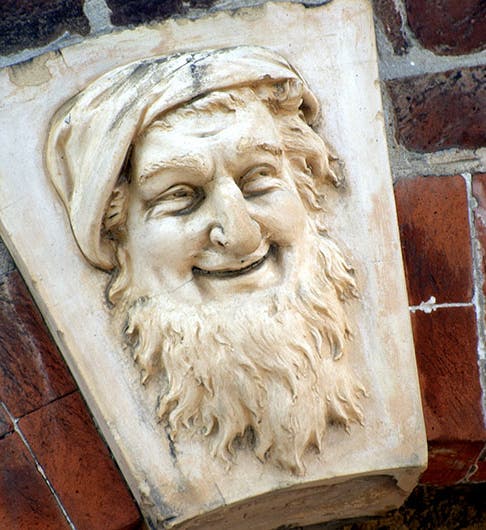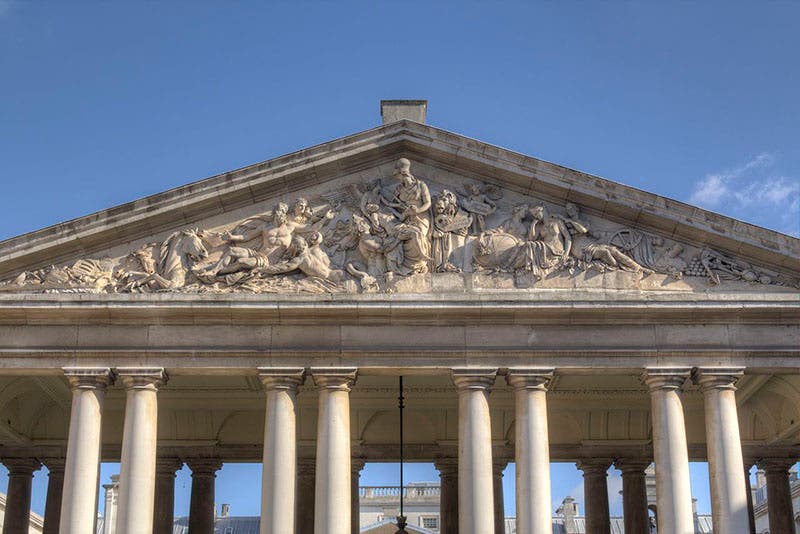Scientist of the Day - Eleanor Coade
Eleanor Coade, an English manufacturer, was born June 3, 1733. Coade was a pioneer in manufacturing artificial stone for use in monuments, which she called Coade stone. There had been other artificial stones before Coade stone, but they were not very satisfactory – neither the stone nor the manufacturers survived. Eleanor Coade invented both the recipe for her stone and the firing technique, and in 1769, she bought into an existing artificial stone factory, installed her own process, fired the former owner, and proceeded to turn out Coade stone facades, urns, tombs, building stone, and statues for the next fifty years. While there were other businesswomen who headed their own establishments in Georgian England, successful woman entrepreneurs were far from typical, and ones that knew the technical side of the business, as Eleanor did, were exceedingly uncommon. Eleanor Coade was a resolute and durable woman, and so was her product. Many Coade stone objects are still with us. One of these is a sculpture of Father Thames that sits in front of Ham House along the River Thames. A detail shows the head of the good father. It is in excellent condition. Another monument made of Coade stone is the tomb of Captain William Bligh in the Garden Museum on the south bank of the Thames, formerly the churchyard of St Mary-at-Lambeth. Bligh’s tomb is on the right, with the urn on top. One of the best known Coade stone creations in London is the South Bank lion, at the east end of Westminster Bridge. This was made in a multi-part mold in 1837, after Eleanor had died (1821) but when Coade's Artificial Stone Manufactory was still in business, and it previously graced the roof of the Red Lion Brewery, near the Old Waterloo Bridge. It has been painted and stripped a few times, but as one can see in a close-up, the stone surface is in remarkably fine and unpitted condition.
The monument that is often considered the finest Coade stone production is the Nelson pediment at Old Royal Navy College, Greenwich (second image). It was sculpted by Joseph Panzetta in 1813, after a design by Benjamin West. It appears from photographs to be in mint condition. A much simpler ornament, but my favorite, is a keystone with the features of Silenus (first image). It is perched over the front door of the Rossborough Inn in College Park, Maryland. There are probably other Coade stone artifacts in the United States (supposedly over 650 Coade productions still survive), but this is the only one I know. Finally, there are two gates to Kew Gardens that sport Coade stone ornaments; one has a lion on top, and the other carries a unicorn. Since Eleanor had no children, and since she was buried in an unmarked grave, we might consider the unicorn to be her monument. It seems more appropriate to this resolute lady than a lion. The house where Eleanor lived, Belmont House in Lyme Regis, also survives; the façade of Coade ornamental stone is still intact. Belmont was occupied much later by the author John Fowles, who wrote The French Lieutenant’s Woman while living there. Dr. William B. Ashworth, Jr., Consultant for the History of Science, Linda Hall Library and Associate Professor emeritus, Department of History, University of Missouri-Kansas City. Comments or corrections are welcome; please direct to ashworthw@umkc.edu.







